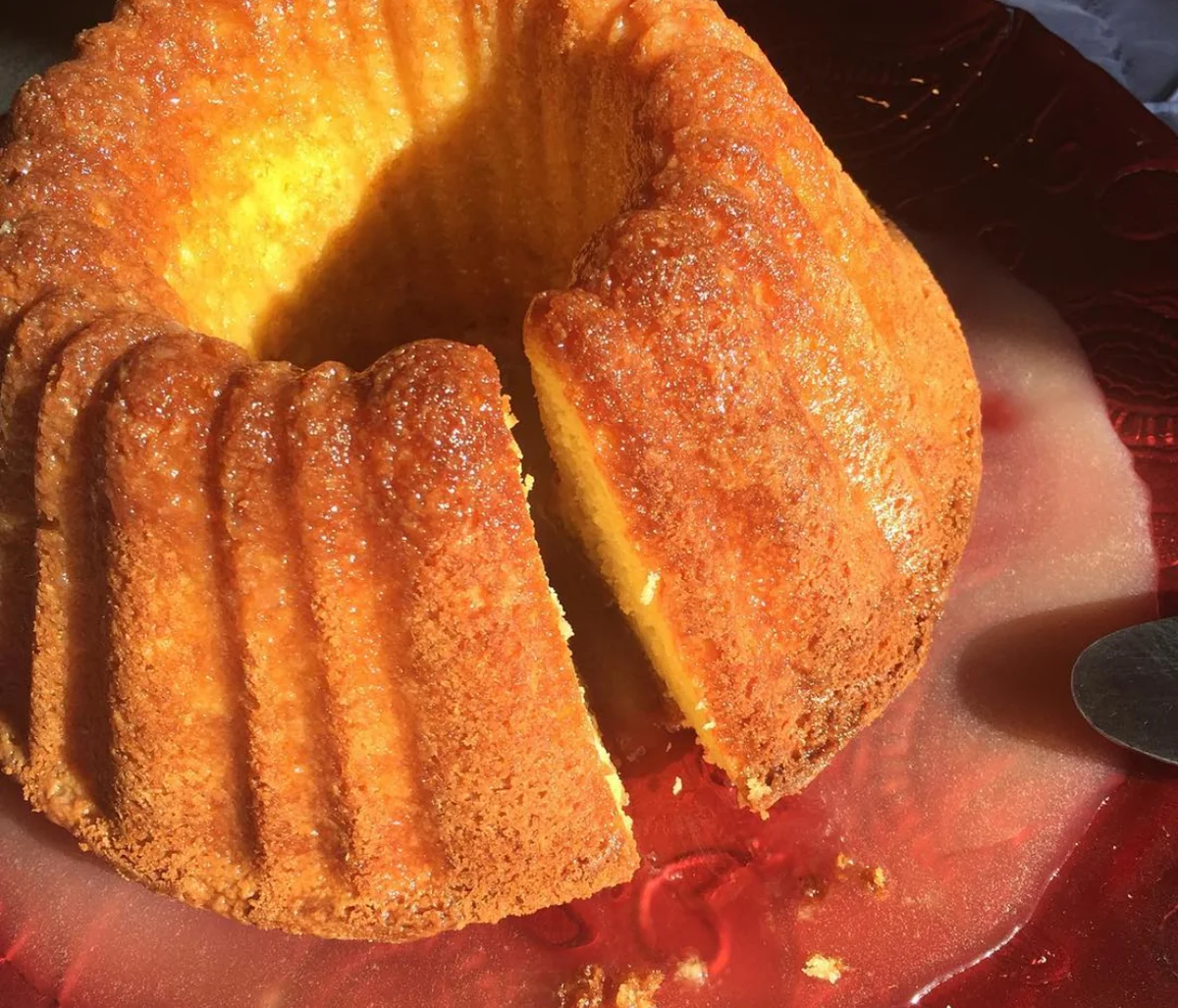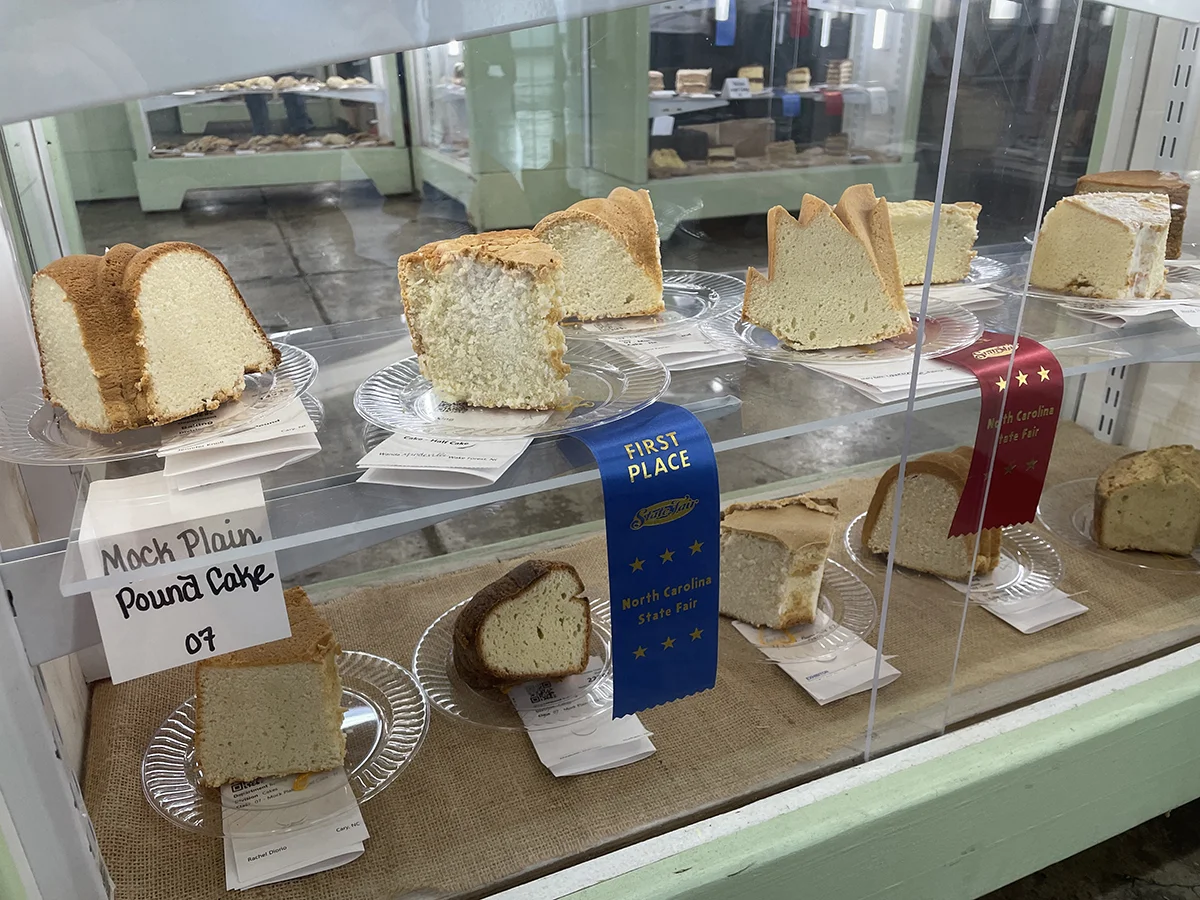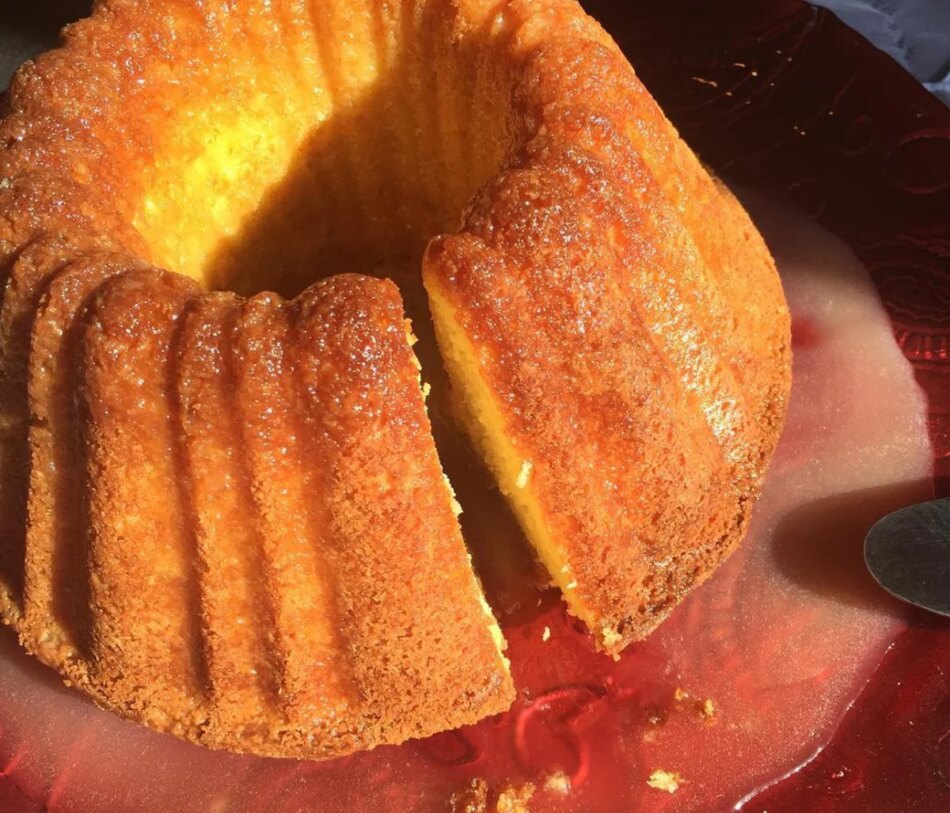
Serving Southerners true pound cake is a serious culinary dare.
This is not just dessert; it’s a traditional masterpiece. Get it wrong, and you’ll be met with the polite-but-deadly judgment: “Well now, isn’t that interesting.”
Here’s the secret, though: Switching in mock pound cake is what many Southerners do and without a lick of shame. Yes, the true version is the holy grail, tangled up in family history and strong opinions. But the substitute is a welcome compromise that could save you from anxiously staring down the oven, praying for success.
In fact, experts have weighed in: N.C. State Fair baking judges and blue-ribbon winners argue that mock pound cake is every bit as traditional, challenging and delicious as its “true” counterpart.
“It’s only a sin when someone tries to call it a true pound cake,” says longtime judge David Schoening.
How it all started
True pound cake’s pedigree certainly contributes to its exalted status. The first printed recipe, dating to 1747, immediately established the cake’s reputation as a demanding bake. It called for a pound of butter, a pound of flour, a pound of sugar and 12 eggs (six of the whites whipped separately).
The baker’s challenge was to beat the ingredients literally by hand, in a single direction, or with a wooden spoon for a full, excruciating hour before baking the cake in a “quick” oven — a temperature often judged simply by how long the cook could hold a hand inside.
Bakers initially depended on the air they painstakingly beat into pound cake batter to achieve rise — no doubt with fingers crossed while the dessert baked. Exactly when the term “mock” pound cake emerged down South is unclear, but a turning point came around 1881.
In her influential book, “What Miss Fisher Knows About Old Southern Cooking,” one of the first published African American chefs, Abby Fisher of South Carolina, offered pound cake recipes calling for “the best yeast powder.” This addition was surely a relief, finally giving bakers formal permission to use a backup leavener.
Around the same time, commercial baking powder became widely available. Pound cake was finally approachable, and it seemed clear what qualified as mock pound cake — or was it?
Exactly what is true mock pound cake?
The debate over the definition of mock pound cake continues to this day. Take Ivy Hilliard of Wilmington, for instance. She won the 2024 N.C. State Fair blue ribbon for true pound cake, yet she grew up on both versions, recipes she believes date back generations within her family.
The story of her pound cake lineage begins with her maternal grandmother, Maggie Massey, whose family settled in North Carolina in the 1740s. Massey baked the finest mock and true cakes (her recipe is the one that secured Hilliard’s 2024 win). Later, Ivy’s mother, Polly Hilliard, was known for her mock pound cake, especially a scrumptious chocolate adaptation.

Flavor variation is one of the licenses granted to mock pound cake bakers. While true pound cake is typically limited to one flavoring — caraway seeds in that first printed recipe, later rose water, vanilla or lemon — mock pound cake has virtually no limits. N.C. State Fair entries have included praline, coconut lemon and Hilliard’s own margarita pound cake made with tequila.
What qualifies as mock pound cake varies as much as the flavors. State fair guidelines specify that true pound cake contains only butter (or margarine, which traditionalists reject), sugar, eggs and flour. “Mock pound cake can include baking powder, baking soda and milk but cannot include boxed cake mix,” the rules state.
Interestingly, Hilliard, like her mother, uses vegetable oil and milk but skips the leavener entirely. Her mock pound cake relies on beating the eggs well for lift — a method that is hardly a guarantee or shortcut.
“It’s like a three-hour process,” Hilliard says of preparing her mother’s mock pound cake. First, all ingredients must be brought to room temperature, and “you’ve always got to sift the flour. You can’t skip it,” she insists. The cake, like the true version, bakes for more than an hour with no peeking allowed.
The payoff is worth the effort, Hilliard says: “When it was my birthday, I would always ask for the mock pound.”
Not as easy as you think
Despite the work involved with preparing mock pound cake, the category draws significantly more fair entries than the true pound cake class — 42 competitors versus 18 in 2025. State fair exhibit manager Debbie O’Brien confirms the conventional wisdom: “That’s the way usually everyone goes because it’s easier.”
Like Hilliard, the 2025 N.C. State Fair mock pound cake champion, Willie Pope of Raleigh, takes extra time, shunning leavener, because that’s how his mother made mock pound cake. He has evaluated recipes with and without leaveners but noticed slight difference in the final taste or texture. So, he continues to “just beat the stew out of the egg whites,” a method that finally earned him his first blue ribbon after about 15 years of entering the competition.
For Pope, it all comes down to nostalgia: “It goes back to what you grew up with,” he says. “This recipe that we always make is one that my mother used to make…And part of her joking was always that for us to get an inheritance, somebody had had to win the state fair contest.”
The final determination of which is better, true or mock pound cake, comes down to personal taste. Hilliard thinks mock versions are moist and velvety inside and out thanks to additions like milk, sour cream or even cream cheese. True pound cake, she says, serves an irresistible golden, crackly crust.
Pope and his family have always loved mock pound cake so much that he’s never bothered with a side-by-side comparison to see if their secret recipe stands up to the true version.
Ultimately, the discussion is less about ingredients and more about what’s in a cook’s heart. As Schoening says, “Mock pound cakes are a true Southern tradition because they’re all about love.”
Maggie Massey’s Mock Pound Cake
Crisco shortening
Flour
2 sticks of butter, at room temperature
3 cups sugar
½ cup Crisco oil
1 cup whole milk
6 eggs
3 cups sifted, all-purpose Red Band flour and ½ teaspoon salt
1 teaspoon lemon flavoring (see cook’s note)
Cook’s note: This is Ivy Hilliard grandmother’s original recipe. Hilliard’s mother’s chocolate version originally incorporated a full can of Hersey’s Chocolate Syrup. When the company stopped making the canned syrup, the family made their own syrup from scratch and added 14 ounces to this recipe at the end of the creaming process. To make the syrup, blend 1 cup of sugar, 1 cup of cocoa and 1½ cups water and a dash of vanilla extract in a saucepot. Bring the mixture to a boil and then let it simmer for about 15 minutes. “And you will have the best chocolate syrup you’ve ever eaten,” Hilliard says.
Cake procedure: Grease a Bundt plan well with Crisco shortening and then dust the pan with flour. Set aside.
Preheat the oven to 300 degrees.
Cream the butter. Add the sugar and cream well. Add the Crisco oil and cream well. Add the milk and cream well (if using chocolate syrup, add here and cream well). The mixture should be fluffy. Alternately add flour and eggs, beating well after each addition. Add lemon flavor and mix well.
Bake for 1½ hours. Do not open the oven door until the cake has been cooking at least 1 hour or the cake may fall. Test near center. If cake is done, tester will come out clean.
Source: Ivy Hilliard
True Pound Cake
Lard
Sifted flour
2 cups butter, at room temperature
3½ cups sugar
10 large eggs, at room temperature
4 cups sifted all-purpose flour
2 teaspoons pure vanilla extract
Cook’s note: This is Hilliard’s grandmother’s recipe, the one that helped Hilliard win the N.C. State Fair pound cake blue ribbon in 2024. Hilliard says, “This cake is too large for a standard Bundt pan. Do not fill the pan closer than 2 inches from the top. If you have excess batter due to a smaller cake pan use excess batter for an extra loaf cake.”
Cake procedure: Preheat oven to 350 degrees.
Grease a Bundt pan with lard and then dust the pan with sifted flour.
Cream butter and sugar until light and fluffy. Alternately add eggs and flour, beating on low speed after every addition to ensure ingredients are well blended. Add vanilla extract last.
Pour the batter in the prepared pan and bake for 1 hour and 20 minutes. Note: Bake times can vary due to ovens. Check at 1 hour and 15 minutes to monitor doneness. You will need a long cake tester to test doneness as this is a deep cake. If test comes out clean, cake is done. When you remove the cake from oven, let the cake sit for 10 minutes in the pan before you turn it out.
Source: Ivy Hilliard









